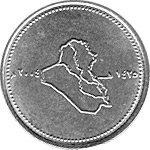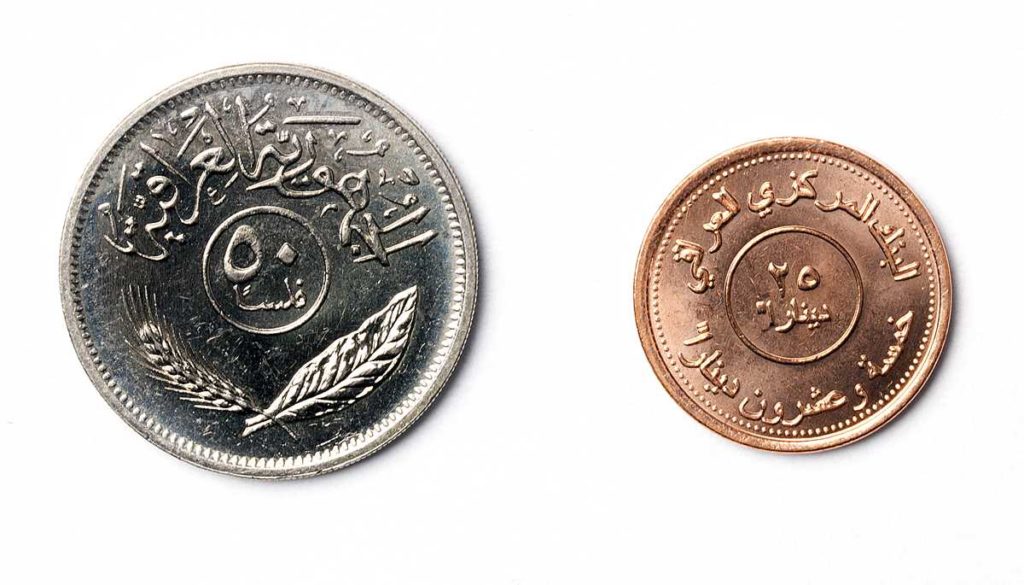The history of coinage in Iraq is in some ways a history of coinage itself. Some of the ancient civilizations that existed in modern-day Iraq — Assyria, Sumeria, Babylonia, et cetera — minted the first proto-coins presently known, pre-weighed pieces stamped with a symbol to spare traders the hassle of weighing the metals each time. These were called shekels and were first made around 3000 BCE.
Throughout the history of Mesopotamia, coins with Greek inscriptions in the area of modern Iraq are extensive and help tell the story of the people and events of the time. Later hammered coins, with Islamic inscriptions, were made after the seventh century and throughout the Ottoman Empire era (until 1919).
Gaza Strip rare coins for collectors and other buyers

The modern state of Iraq began in 1932, when the dinar was introduced.
1 dinar = 1000 fils [note “fils” is used by English-speaking collectors as the singular and plural form]
1 riyal (a.k.a. rial) = 200 fils
1 dirham = 50 fils
Several coins were issued, all in fils, at first. In 1953, a silver 100 fils coin was added (the 20, 50, and 200 fils coins were also silver). In 1969, the 2, 4, 20, and 200 fils denominations were discontinued when a new set was released. Later coins included 250 fils, 500 fils, and a 1 dinar coin. Following Saddam Hussein’s deposition, three new coins (25, 50, and 100 dinars) were introduced in 2004 but subsequently withdrawn.
Browse 68 current Iraq coins for sale offers here
Proof coins and uncirculated sets have been issued by Iraq for collectors. Check listings below.










